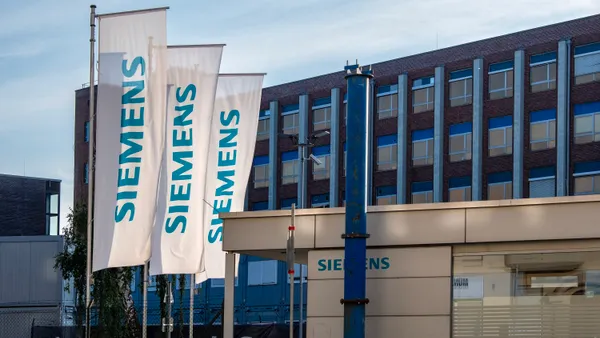Dive Brief:
- The impending 10% tariffs on $300 billion of Chinese imports, set to go into effect Sept. 1, would be more damaging than the previous three tranches because it includes more intermediary and finished goods, according to a report from S&P Global sent to Supply Chain Dive.
- As a result, S&P expects major firms, including Cisco, Dell, HP and Seagate, to raise prices or shift production and sourcing to Southeast Asia to compensate for projected revenue losses.
- S&P, along with the Consumer Technology Association (CTA), expressed concern that whiplash from the trade war could hamper tech companies' ability to innovate at a time when the U.S. and China are currently racing to develop and deploy artificial intelligence (AI), machine learning and 5G technologies.
Dive Insight:
According to the CTA, the upcoming tariffs include smartphones, laptops, smartwatches, wireless earbuds, lithium batteries and more.
While consumers can expect varying degrees of price increases from brands if the 10% tariffs go into effect, changes in the cost of completed goods only tell a small part of the story.
Tech companies are looking to retool and diversify their supply chains in China and Southeast Asia, which is a resource drain and means less cash is available to invest in innovation, CTA Vice President of International Trade Sage Chandler told Supply Chain Dive.
Many of the companies Chandler works with rely on cheap manufacturing in China to invest in research, new designs and high-tech AI and machine learning applications in the U.S.
"A lot of the pieces of the supply chain that the administration is trying to help are actually getting hurt because now these extra companies do not have the extra income to pay those higher paying jobs here in the U.S." Chandler said.
When a 25% tariff on $300 billion worth of Chinese goods was under consideration earlier this year, many firms echoed this sentiment, including Apple, saying they would be forced to reduce investment in or cut high-value research and manufacturing jobs in the U.S. due to increased supply chain costs from moving out of China.
"If you take their suppliers away from them what’re they going to do?" Chandler said. "They’re going to spend their time and resources finding another chain of supply."
Chandler said the September date for the new 10% tariffs is coming at a terrible time for American firms as many are entering into new contracts for supply for the back to school and holiday seasons.
While some of the bigger tech firms can survive a margin hit midway through this process, Chandler said 80% of the CTA's approximately 2,400 members are small- to medium-sized enterprises that might not be able to withstand the extra pressure.
"They get enough capital together to get prototypes done, run it over to China to manufacture and they’re in the water on the way back and the tariffs hit and they don’t have enough money to get their cargo out of customs. That is happening to a lot of our members," Chandler said. "There’s gonna be a lot of small and medium companies that ... will go out of business because they can’t survive that cycle of going back to their board or the bank to get funding."














